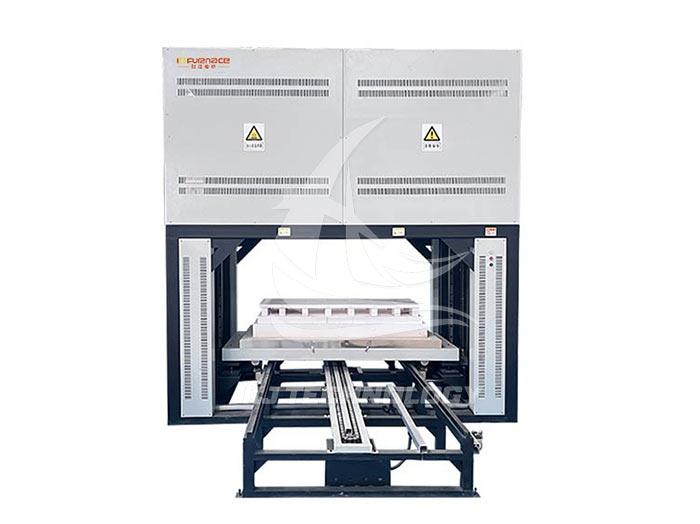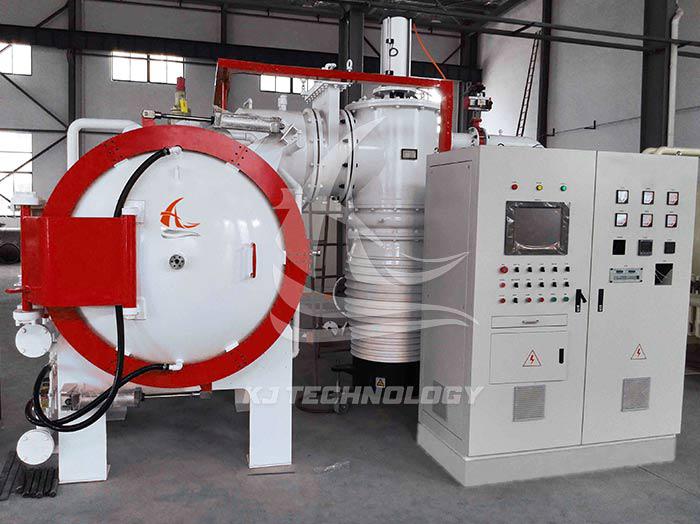High vacuum electric furnace sintering experiment
 11-04-2025 Author: KJ technology
11-04-2025 Author: KJ technology
High vacuum electric furnaces are suitable for sintering experiments where strict requirements are placed on material purity and performance stability. Their core advantage lies in suppressing oxidation and pollution through a high vacuum environment (usually in the range of 10-3Pa), combined with precise temperature control to achieve material densification and performance optimization. The following analysis will be conducted from three aspects: technical principles, typical applications, and experimental advantages:
1. Technical principles and experimental procedures
Establishment of vacuum environment
By using a vacuum pump assembly (such as a mechanical pump+molecular pump) to pump the furnace pressure to below 10-3Pa, active gases such as oxygen and water vapor are removed to prevent material oxidation. For example, in the preparation of silicon carbide fiber-reinforced composite materials, a vacuum environment can prevent oxidation at the interface between the fibers and the matrix, and improve the bonding strength.
Heating and temperature control system
Heating element: Using silicon molybdenum rods, graphite resistors, etc., high temperature heating is achieved through low voltage and high current (up to 2400 ℃).
Temperature Control Accuracy: Equipped with an intelligent PID control system, the temperature control accuracy is ± 1 ℃, and it supports multi-stage program temperature control (such as 30 or more stages). For example, during the sintering of alumina ceramics, slow heating (50 ℃/min) can be set to avoid cracks, and the insulation stage can promote solid-phase reactions.
Atmosphere control
Inert gases such as argon and nitrogen, or reducing gases such as hydrogen can be introduced, and the flow rate can be precisely adjusted (with an accuracy of ± 1% FS) through a mass flow controller (MFC). For example, introducing hydrogen gas during the reduction of metal oxides can improve the microstructure of the material.
2. Typical sintering experimental applications
Ceramic material sintering
Application case: Zirconia ceramic body is sintered under vacuum, which shortens the cycle and increases the density.
Process advantages: Vacuum environment suppresses abnormal grain growth, improves hardness and wear resistance, suitable for ceramic components of aircraft engines.
Preparation of metal based composite materials
Application case: Sintering tungsten alloy under vacuum improves mechanical properties and significantly enhances wear resistance.
Process advantage: Avoiding tungsten from reacting with oxygen at high temperatures to generate volatile oxides and improving material purity.
Nanomaterial synthesis
Application case: Preparation of bismuth telluride based thermoelectric materials with reduced lattice distortion rate through dual temperature zone control (temperature difference up to 300 ℃).
Process advantage: Vacuum environment reduces nanoparticle aggregation and achieves size uniformity (± 5nm).
Semiconductor Material Processing
Application case: Annealing silicon wafers under vacuum reduces dislocation density and improves the yield of integrated circuits.
Process advantage: Avoiding the diffusion of metal impurities and optimizing electrical performance.
3. Experimental advantages and data support
Inhibit oxidation and pollution
Data: When tungsten is heated in vacuum, the gas content decreases and the plasticity increases compared to air.
Case: After vacuum solution treatment, the creep resistance of aircraft engine turbine blades is improved.
Promote densification
Data: Hard alloy vacuum sintering results in higher density and increased hardness.
Case: The density of silicon carbide ceramics increased from 3.1g/cm ³ to 3.2g/cm ³, resulting in improved fracture toughness.
Accurate control of phase transition
Data: When some oxide ceramics are sintered under vacuum, the amorphous transition temperature decreases by 100 ℃ and the phase transition becomes more uniform.
Case: Barium titanate ceramics are sintered under gradient vacuum, and the fluctuation range of dielectric constant is reduced.
4. Key points of experimental operation
Furnace loading specifications
Use high-purity graphite molds to avoid metal contamination.
Add a carbon fiber insulation layer between the sample and the mold to prevent thermal radiation interference.
vacuum sealing
Insert vacuum sealing tape, lock the top cover of the furnace, and evacuate to below 10-3Pa.
Case: Excessive leakage rate (>0.66Pa/h) can lead to oxidation and requires regular leak detection.
security control
Intermediate frequency voltage 750V, wear protective equipment during operation to avoid electric shock.
The cooling water pressure needs to be stable (± 0.1MPa) to prevent the induction coil from overheating.
5. Equipment selection suggestions
Temperature range: Select according to the melting point of the material (such as 1400 ℃, 1700 ℃, 2400 ℃).
Vacuum degree: High purity material preparation requires a vacuum level of 10-4Pa.
Dual temperature zone design: The preparation of functionally graded materials requires an independent temperature control system (temperature difference ≥ 300 ℃).
Atmosphere control: A hydrogen analyzer should be equipped for reducing atmospheres to prevent explosion risks.








